Accept all cookies Accept only essential cookies See our Cookie Notice

About ESA
The European Space Agency (ESA) is Europe’s gateway to space. Its mission is to shape the development of Europe’s space capability and ensure that investment in space continues to deliver benefits to the citizens of Europe and the world.
Highlights
ESA - United space in Europe
This is ESA ESA facts Member States & Cooperating States Funding Director General Top management For Member State Delegations European vision European Space Policy ESA & EU Space Councils Responsibility & Sustainability Annual Report Calendar of meetings Corporate newsEstablishments & sites
ESA Headquarters ESA ESTEC ESA ESOC ESA ESRIN ESA EAC ESA ESAC Europe's Spaceport ESA ESEC ESA ECSAT Brussels Office Washington OfficeWorking with ESA
Business with ESA ESA Commercialisation Gateway Law at ESA Careers Cyber resilience at ESA IT at ESA Newsroom Partnerships Merchandising Licence Education Open Space Innovation Platform Integrity and Reporting Administrative Tribunal Health and SafetyMore about ESA
History ESA Historical Archives Exhibitions Publications Art & Culture ESA Merchandise Kids Diversity ESA Brand CentreLatest
Space in Member States
Find out more about space activities in our 23 Member States, and understand how ESA works together with their national agencies, institutions and organisations.
Science & Exploration
Exploring our Solar System and unlocking the secrets of the Universe
Go to topicAstronauts
Missions
Juice Euclid Webb Solar Orbiter BepiColombo Gaia ExoMars Cheops Exoplanet missions More missionsActivities
International Space Station Orion service module Gateway Concordia Caves & Pangaea BenefitsLatest
Space Safety
Protecting life and infrastructure on Earth and in orbit
Go to topicAsteroids
Asteroids and Planetary Defence Asteroid danger explained Flyeye telescope: asteroid detection Hera mission: asteroid deflection Near-Earth Object Coordination CentreSpace junk
About space debris Space debris by the numbers Space Environment Report In space refuelling, refurbishing and removingSafety from space
Clean Space ecodesign Zero Debris Technologies Space for Earth Supporting Sustainable DevelopmentLatest
Applications
Using space to benefit citizens and meet future challenges on Earth
Go to topicObserving the Earth
Observing the Earth Future EO Copernicus Meteorology Space for our climate Satellite missionsCommercialisation
ESA Commercialisation Gateway Open Space Innovation Platform Business Incubation ESA Space SolutionsLatest
Enabling & Support
Making space accessible and developing the technologies for the future
Go to topicBuilding missions
Space Engineering and Technology Test centre Laboratories Concurrent Design Facility Preparing for the future Shaping the Future Discovery and Preparation Advanced Concepts TeamSpace transportation
Space Transportation Ariane Vega Space Rider Future space transportation Boost! Europe's Spaceport Launches from Europe's Spaceport from 2012Latest

Wireless power from space
Thank you for liking
You have already liked this page, you can only like it once!
Solar power gathered far away in space, seen here being transmitted wirelessly down to Earth to wherever it is needed. ESA plans to investigate key technologies needed to make Space-Based Solar Power a working reality through its SOLARIS initiative. One such technology – wireless power transmission – was recently demonstrated in Germany to an audience of decision makers from business and government.
The demonstration took place at Airbus’ X-Works Innovation Factory in Munich. Using microwave beaming, green energy was transmitted between two points representing ‘Space’ and ‘Earth’ over a distance of 36 metres.
The received power was used to light up a model city and produce green hydrogen by splitting water. It even served to produce the world’s first wirelessly cooled 0% alcohol beer in a fridge before being served to the watching audience.
For a working version of a Space-Based Solar Power system, solar power satellites in geostationary orbit would harvest sunlight on a permanent 24/7 basis then convert it into low-power density microwaves to safely beam down to receiver stations on Earth. The physics involved means that these satellites would have to be large, on the order of several kilometres in size, to generate the equivalent power of a typical nuclear power station. The same would be true for the collecting ‘rectennas’ down on Earth’s surface.
Achieving this vision would require technical advancements in areas such as in-space manufacturing and robotic assembly, low-cost high-efficiency photovoltaics, high power electronics and radio frequency beam forming. Further research to confirm benign effects of low-power microwaves on human and animal health and compatibility with aircraft and satellites would also be undertaken.
ESA’s SOLARIS – being proposed to Europe’s space ministers at the Agency’s Council at Ministerial Level on 22-23 November – will research these technologies, to allow Agency Member States to make an informed choice on future implementation of Space-Based Solar Power as a new source of clean, always-on ‘baseload’ power supplementing existing renewable power sources, helping Europe to attain Net Zero by mid-century.
In addition, any breakthroughs achieved in these areas will also benefit many other spaceflight endeavours as well as terrestrial applications.
-
CREDIT
Airbus -
LICENCE
ESA Standard Licence
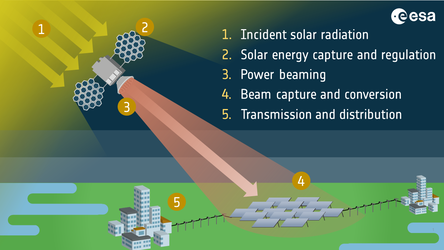
Stages of space-based solar power
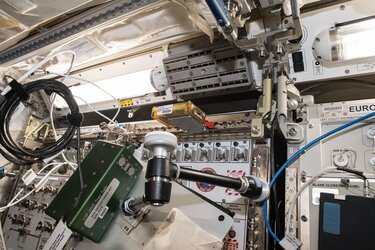
Wireless Compose module installed on the Space Station
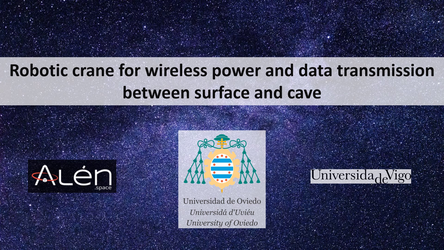
Robotic crane for wireless power and data transmissi…
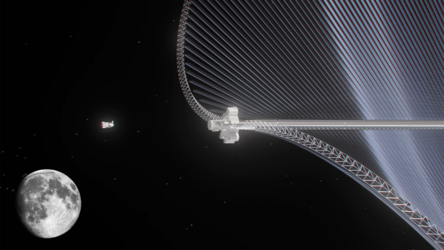
Lunar solar power satellite
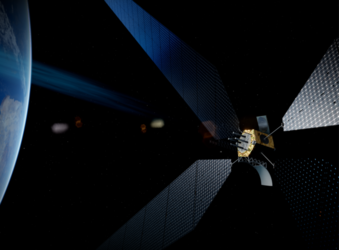














 Germany
Germany
 Austria
Austria
 Belgium
Belgium
 Denmark
Denmark
 Spain
Spain
 Estonia
Estonia
 Finland
Finland
 France
France
 Greece
Greece
 Hungary
Hungary
 Ireland
Ireland
 Italy
Italy
 Luxembourg
Luxembourg
 Norway
Norway
 The Netherlands
The Netherlands
 Poland
Poland
 Portugal
Portugal
 Czechia
Czechia
 Romania
Romania
 United Kingdom
United Kingdom
 Slovenia
Slovenia
 Sweden
Sweden
 Switzerland
Switzerland
























